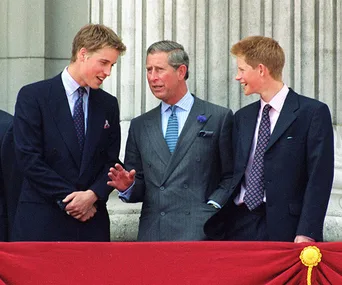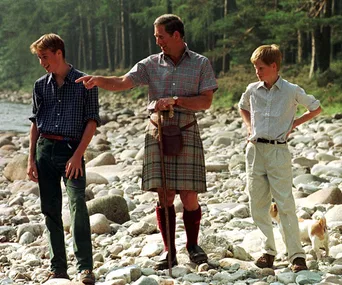If you want to understand the Prince of Wales, what makes him tick, how he works, his deep loves, private passions and quiet reflections, the garden at Highgrove is where the royal’s soul is laid bare. Highgrove is Prince Charles’ own creation where his personality, his hopes, dreams, beliefs, artistic sensibility and sense of humour are all on display.
The gardens and house at Highgrove are much more than a bolthole from London’s glare and bustle. Unlike Birkhall, the Scottish home he inherited from his grandmother alongside his mother’s Balmoral Castle estate, or Clarence House, his town house in London next to St James’s Palace, Prince Charles purchased Highgrove himself in 1980. It is a Georgian house in the heart of picture-postcard Gloucestershire where he grew the garden from scratch, saving only the yews – now topiarised into unique structural shapes – and the original cedar tree.
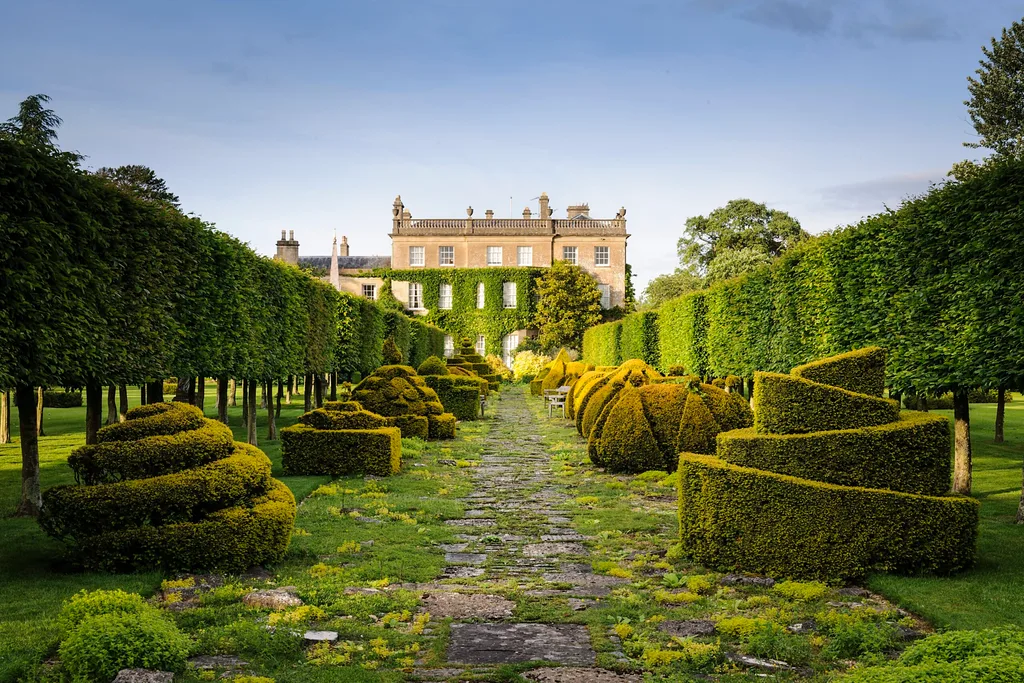
The Prince was advised to take out these yews but he honoured their longevity and instead had each one individually toplarised. (Image: Jason Ingram)
Everything at Highgrove has been, and continues to be, meticulously planned and chosen by the Prince, he literally leaves no stone unturned. It’s a showcase for his passion for organic gardening and farming, and rigorously puts into action sustainable practices. The fruit and vegetables eaten at Highgrove and his other residences around the UK are all grown here, from figs and asparagus to His Royal Highness’s favourite purple carrots. And it is here where this father and grandfather erected a treehouse for Princes William and Harry to play in as children, which has now been remodelled for Prince George and Princess Charlotte and no doubt Prince Louis.
So, to celebrate the royal’s 70th birthday, The Weekly was honoured to be welcomed into this very special country retreat which means so much to His Royal Highness, and to hear direct from the Prince about its deep personal significance.

The Prince of Wales turns 70 on November 14th. (Hero image: Hugo Burnand)
“As you can perhaps imagine, after very nearly 40 years of, as it were, ‘painting a picture’ on what was then a totally blank canvas of a garden, it all means a great deal to me now,” Prince Charles explains. “This is especially so when I look out of the windows of the house at the various views I had planned and to see them gradually coming to fruition.
“What the garden means to me now is that, above all, not only has it become a haven for some of the rare and endangered varieties that 40 years ago were being recklessly discarded in a world driven by short-termism, convenience and a rash disregard for nature’s place in the scheme of things, but I hope it may also have become a more harmonious place from which to draw inspiration,” he adds.
A secret garden
From the moment you stop on to Prince Charles’ Highgrove estate, through a wildflower meadow dotted with bulbs – this year there are late-flowering daffodils named after him as a 70th birthday gift – you enter a world of natural wonder. You won’t find clipped lawns and grandiose statements, although there are stunning statues, intricate doors and gates, temples and monuments, pieces from travels and made by students from his traditional arts and craft schools, reclaimed blocks of stone and complex horticultural creations.
“What I have tried to do with the garden is to create a mixture of formality and informality in order to engender a sense of harmony,” explains the Prince. “But I always feel the real secret is to introduce elements of the informal into the formal parts of the garden, such as allowing plants to spill over borders onto paths.” The result is utterly captivating and continually evolving.
Debs Goodenough is Prince Charles’ head gardener and one of a team of 11 who help execute his vision. “He knows his plants very well. It’s really nice to work for someone who knows his gardening elements and he knows what he likes and you get that input immediately,” she says. “It’s not a committee. Colours are really important to His Royal Highness and also scent, which we try to add wherever we can. He especially loves delphiniums; we have lots of them.”
This is my second visit to the garden and so much has changed. Wild orchids which were hardly noticeable on my last visit are now all through the meadows, and there is a glorious, vivid azalea walk, newly planted for Prince Charles’ 70th. The Islamic Carpet Garden with its aqua and blue mosaic, pink walls and white peonies is as transporting as I remember, while the increase in bulbs – Debs tells me she plants an eye-watering 50,000 a year – is very evident. The gate which the Prince brought back from India has been renamed the Shand Gate after the Duchess of Cornwall’s beloved brother, Mark Shand, who died suddenly in 2014, and a new addition is a topiary elephant, a gift from the Duchess, a memorial to her brother’s Elephant Family charity.
“I am always intrigued that people coming to Highgrove for the first time seem to expect the whole place to be frightfully formal,” says the Prince. “I can only say that I am delighted they are nicely surprised by the unexpected, quirky aspects of the garden that, I hope, give it its character.”
“They come in expecting Versailles and it bowls them over,” explains Debs. “And the thing is, it wasn’t here when he came. It’s something he created. It’s his detail, his ideas, it comes right from him.”
While Prince Charles typically likes to effect change quickly in his work, here patience is paramount. “Working with nature is always humbling because everything takes much longer than you would want, and so creating the garden has, therefore, been a journey which I am still on, like so many other gardeners,” he says. “It combines a whole variety of different elements which are profoundly important to me.”
The heir to the throne is often found gardening here. “He likes pruning, he’s really good at it, and he still plants,” says Debs. And when he’s in residence, the Prince heads straight out for walkabouts with Deb.
“I always ask him if he wants to do things himself in the garden and if he says yes he will ask, ‘can you leave me a wheelbarrow and spade, string and canes’, whatever suits what he’s doing. I’m sure that being in the garden is very therapeutic for him.”
Prince William’s treehouse
As a young boy Prince Charles was always curious about nature and relished spending days outdoors learning about all the different plants. “I remember that my sister and I had a very small plot of our own in a hidden corner of the garden at Buckingham Palace where we grew vegetables,” he recalls. “But I suspect I was most influenced as a child by my grandmother Queen Elizabeth, The Queen Mother’s gardens at Royal Lodge in Windsor Great Park, and at Birkhall in Scotland. I adored both these gardens as they had the kind of special features that inevitably appeal to children. As a result, in planning and designing my own garden at Highgrove, I have drawn on all the features and little details that gave me particular joy and interest as a child. Needless to say, it is fascinating to watch new generations of children responding exactly as I had hoped, and in the same way I did.”
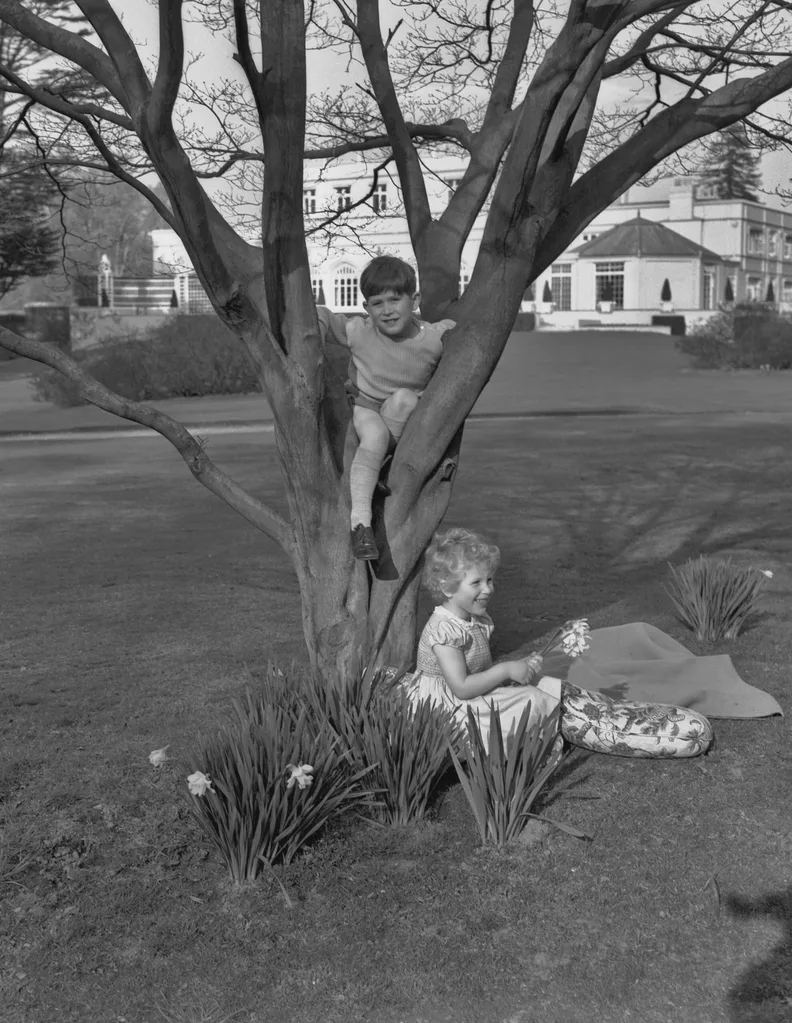
Prince Charles and Princess Anne playing in the garden at the Royal Lodge in Windsor in April 1954. (Image: Getty)
The treehouse at Highgrove sits in an otherworldly woodland area known as the Stumpery. Here plants grow out of tree trunks, ferns unfurl and different flowers throughout the year pop up out of the ground. There are some of the Prince’s famous collection of hostas, and also toadstools carved from wood, a topiary snail and more. “There’s an almost prehistoric feeling in the winter,” says Debs.
This is also where in 1988, ‘Holyrood House’ was constructed, a fun rustic tree house which was built for the Prince by designer Willie Bertram when William and Harry were aged five and three. Willie talked to Prince William before he designed the playhouse and in Prince Charles’s book Highgrove: A Garden Celebrated he reveals the telling remit delivered by young Will. “At the interview the young prince said ‘I want it to be as high as possible so I can get away from everyone and I want a rope ladder which I can pull up so no one can get at me’.”

The treehouse that Prince Charles built for his children. (Image: GAP Photos/Highgrove – A Lawson – The Stumpery Design)
The house was perched up in a holly tree for William and Harry to play in, but when I visit I find it pitched lower, → with steps of stone and wood up to the entrance and a new thatched roof. “It’s all back in good shape,” says Deb when I suggest its new position may well be to suit the patter of tiny grandchildren’s feet.
“Children always love running round little paths, paddling in fountains, getting lost in mazes, finding things to eat in a kitchen garden and, of course, playing happily in a treehouse,” says Prince Charles. “Inevitably, my grandchildren rather enjoy some of those things in the garden at Highgrove. No doubt when they are older, they will find everything in the garden looking smaller than they remember it as children, except perhaps the trees I have got them to plant.”
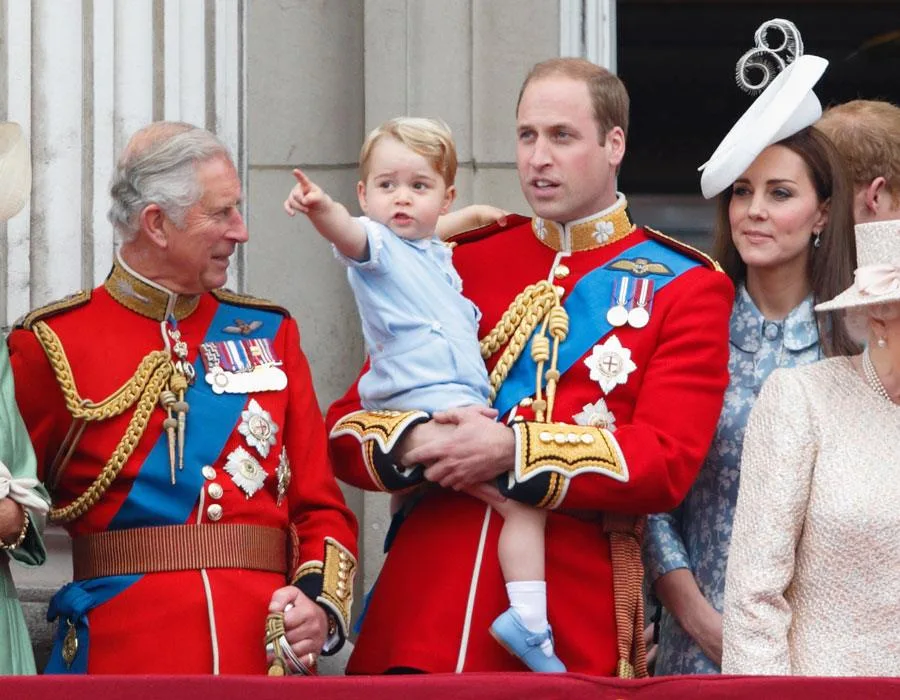
Prince Charles is passing on his love of nature to his grandchildren. (Image: Getty)
Also poking out of a thicket and looking distinctly out of place is a gaudy garden gnome. I’m told the Prince was gifted it, carried it into the garden and then it dropped out his hand, breaking the poor fellow in two.
“The legs came off and His Royal Highness pushed it down somewhere and said ‘it’s there for the guides to find’. And so he moves it about every year and they have to find it every year,” says Debs, laughing.
Also in this area is the magnificent and poignant Temple of Worthies, a memorial dedicated to the Queen Mother after she died in 2002, and made from green oak featuring a central relief of the royal – a quite uncanny likeness. “She’s in her gardening hat with a feather stuck in the top,” says Debs. “She is looking over the area that His Royal Highness planted originally.”
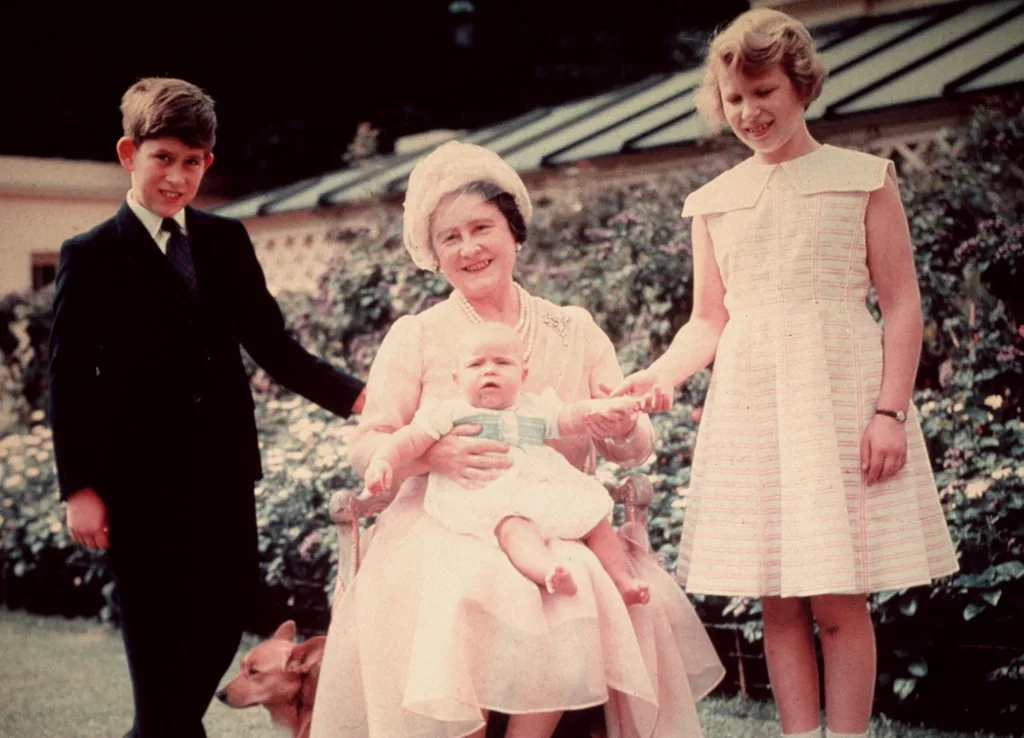
Queen Elizabeth, the Queen Mother with her grandchildren Prince Charles, Princess Anne and Prince Andrew. (Image: Getty)
I ask the Prince if the Queen Mother ever saw his garden. “My grandmother did come to Highgrove, but only in the earlier days when I was in the process of making the garden,” he replies. “As always, she was wonderfully encouraging about my very amateur efforts, and my greatest sadness has been the fact that I could never show her the garden as it has now become, nor the additions I have made to the garden at Birkhall. In both these gardens, and at Clarence House,
her spirit and influence live on.”
Want more on Prince Charles’ 70th birthday? Check out our full coverage here!
Prince Charles’ biggest royal scandals to date
Young Prince Charles: The evolution of a royal
Inside Prince Charles’ boarding school days
Prince Charles and Duchess Camilla: A love story for the ages
Prince Charles and Meghan Markle’s relationship: A look inside their close bond
Prince Charles’ best moments with Prince William and Prince Harry
Prince Charles’ most handsome moments of all time… Yes, you read that right!
Inside the wedding of Prince Charles and Princess Diana
Prince Charles turns 70: See how he’s celebrating
New royal stamps have been released in honour of Prince Charles’ 70th birthday
